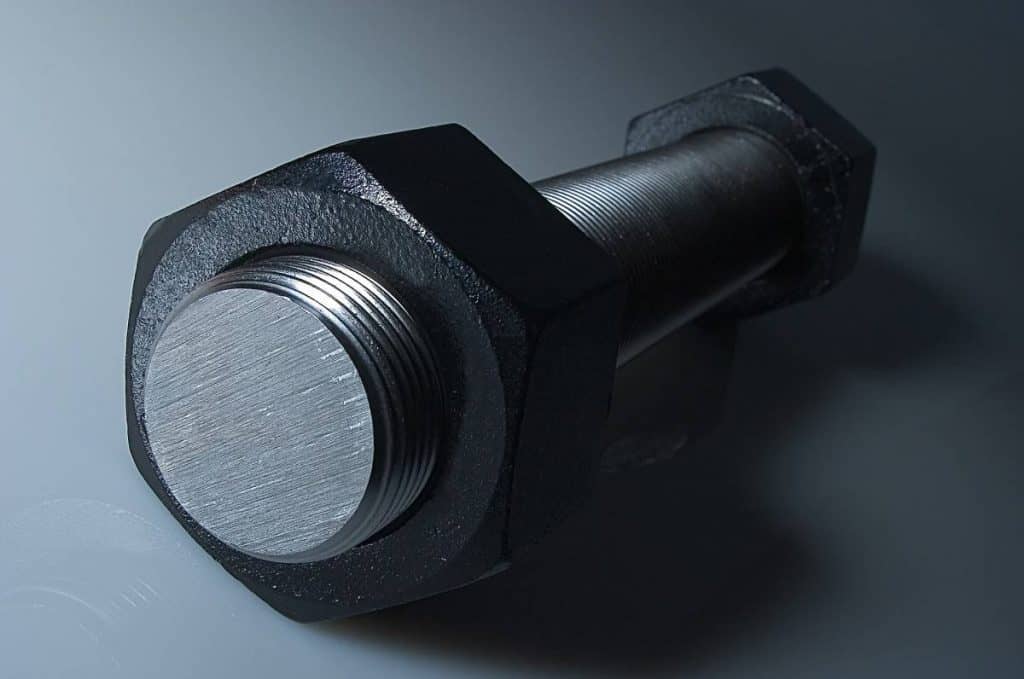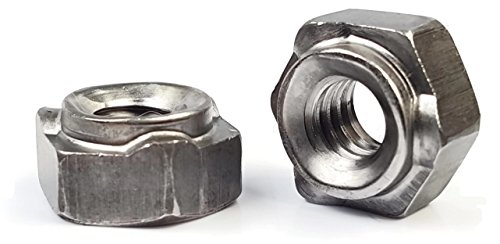Weld nuts play a significant role in welding. This is why both professionals and enthusiasts should know about different types of weld nuts and the welding processes used for joining them.
So what is a weld nut? A weld nut is a type of nut that is specially designed to be welded to another workpiece. Different types of weld nuts are used for different purposes. These include round base nuts, slab base nuts, tab base nuts, hex and square nuts, retainer weld nuts, tube end nuts, twin piloted nuts and more.
Continue reading to learn more details about these fasteners and their welding processes.
More on weld nuts
Most weld nuts are made from stainless steel or low carbon steel. In the case weld nuts are made from low carbon steels, zinc plating may be used to impart a high degree of resistance to corrosion. Zinc-plated weld nuts are more cost-effective than stainless steel weld nuts.
Weld nuts are classified according to thickness, shape and size. These specialized industrial fasteners can be welded on to other pieces of metal, thereby reducing gaps and seams. These nuts can be used in restricted spaces as well.
Different configurations of weld nuts exist to serve various purposes. The hex weld nut is suitable for a wide range of heavy-duty applications, while tab nuts are best for lighter applications. You can attach a right-angled weld nut to the base metal to create a threaded hole, which should be aligned vertically to the surface.
Projection and spot are the two main classes of weld nuts. Spot weld fasteners can be resistance-welded directly to a metal surface with a pres-type or rocker-arm resistance welding system. Projection fasteners, on the other hand, have small protrusions below them, which can be fused to the metal surface using a press-type machine. Fasteners meant for hermetic seals are designed with ring projections contained on the flange of the weld nut.
Projection weld fasteners, in general, generate more precise and reliable welds as compared to spot weld fasteners. However, spot welding fasteners have their own uses. These fasteners work without the use of projections. They are useful for corners and other regions where projection fasteners cannot fuse correctly. They can also be installed in areas that are difficult for press-type welding electrodes to access.
Resistance welding is used to join a range of weld nuts into place. For proper resistance welding, you need to ensure the right balance of pressure, current and time. The current can be adjusted with the help of a regulator, which is a device that modifies the primary to secondary voltage ratios for different current levels. The generated heat level varies with the square of the current.
Parameters for joining weld nuts
The maximum rating printed on the nameplates of these welding machines is the current level that is necessary for creating the weld. For small weld nuts, the current may range from 5,000 to 15,000 amperes. The current range for bigger fasteners can be between 15,000 and 25,000 amperes. For large ring projections, the current can be as big as 75,000 amperes.
For small weld nuts comprising low carbon steel, the pressure can range between 300 and 1,000 psi. The pressure can go up to 1,000 and 2,000 psi for the larger weld nuts. Meanwhile, the bigger ring projections need 4,000 psi pressure. The pressure for stainless steel weld nuts can be between 1,500 and 5,000 psi.
In resistance welding, the time is divided between hold time, weld time and squeeze time. The time is quantified in terms of cycles. Each cycle is 1/60 of a second. For small fasteners, the weld time may vary from 3 to 10 cycles. The weld time for larger fasteners may last between 10 and 20 cycles. To ensure the weld cools downs, a hold time of 20 to 30 cycles is required.
Here is a simple method for determining the right mix of parameters for weld nut-resistance welding. You can start by applying pressure in the upper range. Make sure to use low heat and relatively short weld cycle times. Keep making trials by increasing the current and weld cycles. Keep on doing this until you start making reliable and strong welds. You can increase or lower the pressure as needed, without damaging the electrodes or burning the surface of the base metal.
Weld nut types
Here is everything you need to know about the varieties of weld nuts.
Tab spot weld nuts
Tab spot weld nuts are a suitable choice for applications with limited space. They come with a tab that can accommodate different sized electrodes. The design of tab weld nuts is such that they can be spot welded easily on flat surfaces. They have a locating boss around their threads, which can help find the pilot hole.
These nuts are available in a variety of thread sizes and materials.
Tab projection weld nut
Tab projection weld nuts contain a single projection to make a penetrating and strong weld. This type of weld nut is ideal for heavy gauge sheet metals. It is also equally effective for curved surfaces.
Hex 3 projection weld nuts
The primary advantage of hex-3 projection weld nuts is that you can apply greater torque to these weld nuts as compared to other non-welded nuts. As a result, they provide better performance for industrial and heavy duty applications. For high-torque applications, projection weld nuts show higher resistance to pulling out and twisting.
As the name implies, these weld nuts contain three projections that fuse with the base metal, post welding, to create a secure joint.
You can select different threaded hex-3 projection weld nuts for various applications, depending on their requirements. There are even 6 projection weld nuts for heavy duty applications. These weld nuts exhibit increased strength and resistance for high-torque jobs.
With the right equipment, the installation of these weld nuts can save you a lot of effort and time, which is normally associated with other industrial fasteners.
Medium, short and long piloted weld nuts are commonly used, depending on the thickness of the base material. There are also metric or inch threads with thread masking or optional locking threads for certain projection weld nuts.
Hex-weld nuts with 6 projections enable superior quality contact and high bond strength with the base metal. These nuts have a precision pilot, so that you can accurately insert the mated component inside the threaded hole. Different pilot heights are available for a range of different thicknesses.
Another advantage of 6 projection hex-weld nuts is that they ensure good contact even with surfaces that are not perfectly flat. The precision pilot helps you to thread and locate mated components. During the welding operation, the pilot stops the nut from slipping away.
Square projection weld nut
Square projection weld nuts contain 4 uniform projections for high welding quality. These projections ensure the creation of reliable and strong welds with correct seating. They are available in a variety of thread sizes and dimensions for piloted or unpiloted configuration. This type of nut weld is commonly used in automotive and farm equipment.
Round weld nut
These round weld nuts have precisely placed projections for durable welds. These nuts are suited for applications where orientation and restricted space are limiting factors.
Round weld nuts are available in low carbon steel as well as stainless steel. Different projections are available for various requirements. Round projection is useful where orientation and space limitation are important factors. These self- locating nuts can be installed with automatic feeding equipment.
Chisel point projections are suitable for confined spaces due to the outside diameter, which is small compared to the thread size. The precision pilot places the nut within the mounting hole without a fixture.
Flange weld nuts
Several varieties of nuts are available in this category. Thru-the-hole flange weld nuts have an extended body, which is perfect for applications that require heavy welds.
On-the-material flange weld nuts have weld projections at 3 points to create a strong joint, without affecting the mated component surface.
There are also flange nuts with ring projection and square body available. You can easily weld these nuts onto a cross wire. Since this category provides a bigger weld size area, it is better for welding thin-gauge metal sheets.
Stamped flange weld nuts
These weld nuts are designed to offer easy welding on metal surfaces without the disadvantages posed by other weld nuts.
Engineered projections are made to avoid burnout in thin-gauge sheets. These projections also prevent the nut from distortion in case of high current.
The round head design of the nut increases the rate of production and does away with indexing, which can be time-consuming.
Stamped flange weld nuts also come with a self-locating ability to allow easy insertion of the weld nut into the hole.






